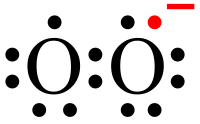
Psoriasis: pathological mechanisms, current pharmacological therapies, and emerging drug delivery systems.
Sign Up to like & getrecommendations! Published in 2020 at "Drug discovery today"
DOI: 10.1016/j.drudis.2020.09.023
Abstract: Psoriasis is a chronic autoimmune skin disorder triggered by either genetic factors, environmental factors, life style, or a combination thereof. Clinical investigations have identified pathogenesis, such as T cell and cytokine-mediated, genetic disposition, antimicrobial peptides,… read more here.
Keywords: psoriasis pathological; delivery systems; drug; pathological mechanisms ... See more keywords

Seizures in patients with a phaeochromocytoma/paraganglioma (PPGL): A review of clinical cases and postulated pathological mechanisms.
Sign Up to like & getrecommendations! Published in 2019 at "Revue neurologique"
DOI: 10.1016/j.neurol.2018.11.007
Abstract: The purpose of this work was to expound on the postulated pathological mechanisms through which pheochromocytoma/paraganglioma (PPGL) can cause seizures by conducting a comprehensive review of ten cases and several pathogenic mechanisms. The goal was… read more here.
Keywords: paraganglioma ppgl; review; pathological mechanisms; ppgl ... See more keywords

A Review on Adducin from Functional to Pathological Mechanisms: Future Direction in Cancer
Sign Up to like & getrecommendations! Published in 2018 at "BioMed Research International"
DOI: 10.1155/2018/3465929
Abstract: Adducin (ADD) is a family of membrane skeleton proteins including ADD1, ADD2, and ADD3 that are encoded by distinct genes on different chromosomes. Adducin is primarily responsible for the assembly of spectrin-actin network that provides… read more here.
Keywords: functional pathological; adducin functional; mechanisms future; pathological mechanisms ... See more keywords

Current Status of Alzheimer's Disease and Pathological Mechanisms Investigating the Therapeutic Molecular Targets.
Sign Up to like & getrecommendations! Published in 2022 at "Current molecular medicine"
DOI: 10.2174/1566524022666220404112843
Abstract: Alzheimer's disease (AD) is a sort of disarrangement in psychological, biological, or developmental mechanisms basic to mental functions. AD is generally affiliated with marked discomfort and impaired social, professional, or other crucial aspects of life.… read more here.
Keywords: disease pathological; pathological mechanisms; disease; alzheimer disease ... See more keywords

Single-cell RNA-sequencing and microarray analyses to explore the pathological mechanisms of chronic thromboembolic pulmonary hypertension
Sign Up to like & getrecommendations! Published in 2022 at "Frontiers in Cardiovascular Medicine"
DOI: 10.3389/fcvm.2022.900353
Abstract: Objective The present study aimed to explore the pathological mechanisms of chronic thromboembolic pulmonary hypertension (CTEPH) using a gene chip array and single-cell RNA-sequencing (scRNA-seq). Materials and methods The mRNA expression profile GSE130391 was downloaded… read more here.
Keywords: mechanisms chronic; cell; pathological mechanisms; rna ... See more keywords

Roles of Altered Macrophages and Cytokines: Implications for Pathological Mechanisms of Postmenopausal Osteoporosis, Rheumatoid Arthritis, and Alzheimer’s Disease
Sign Up to like & getrecommendations! Published in 2022 at "Frontiers in Endocrinology"
DOI: 10.3389/fendo.2022.876269
Abstract: Postmenopausal osteoporosis (PMOP) is characterized by the uncoupling of bone resorption and bone formation induced by estrogen deficiency, which is a complex outcome related to estrogen and the immune system. The interaction between bone and… read more here.
Keywords: macrophages cytokines; pathological mechanisms; altered macrophages; pmop ... See more keywords

Pathological Mechanisms Linking Diabetes Mellitus and Alzheimer’s Disease: the Receptor for Advanced Glycation End Products (RAGE)
Sign Up to like & getrecommendations! Published in 2020 at "Frontiers in Aging Neuroscience"
DOI: 10.3389/fnagi.2020.00217
Abstract: Diabetes and Alzheimer’s disease (AD) place a significant burden on health care systems in the world and its aging populations. These diseases have long been regarded as separate entities; however, advanced glycation end products (AGEs)… read more here.
Keywords: alzheimer disease; end products; glycation end; pathological mechanisms ... See more keywords

Thymoquinone in Ocular Neurodegeneration: Modulation of Pathological Mechanisms via Multiple Pathways
Sign Up to like & getrecommendations! Published in 2022 at "Frontiers in Cellular Neuroscience"
DOI: 10.3389/fncel.2022.786926
Abstract: Thymoquinone is a naturally occurring compound and is the major component of Nigella sativa, also known as black seed or black cumin. For centuries thymoquinone has been used especially in the Middle East traditionally to… read more here.
Keywords: pathological mechanisms; neurodegeneration modulation; modulation pathological; neurodegeneration ... See more keywords

Ischemic stroke: From pathological mechanisms to neuroprotective strategies
Sign Up to like & getrecommendations! Published in 2022 at "Frontiers in Neurology"
DOI: 10.3389/fneur.2022.1013083
Abstract: Ischemic stroke (IS) has complex pathological mechanisms, and is extremely difficult to treat. At present, the treatment of IS is mainly based on intravenous thrombolysis and mechanical thrombectomy, but they are limited by a strict… read more here.
Keywords: pathological mechanisms; development; stroke pathological; neuroprotective strategies ... See more keywords

BMP signaling during craniofacial development: new insights into pathological mechanisms leading to craniofacial anomalies
Sign Up to like & getrecommendations! Published in 2023 at "Frontiers in Physiology"
DOI: 10.3389/fphys.2023.1170511
Abstract: Cranial neural crest cells (NCCs) are the origin of the anterior part of the face and the head. Cranial NCCs are multipotent cells giving rise to bones, cartilage, adipose-tissues in the face, and neural cells,… read more here.
Keywords: signaling craniofacial; bmp signaling; pathological mechanisms; development ... See more keywords

The Pathological Mechanisms of Hearing Loss Caused by KCNQ1 and KCNQ4 Variants
Sign Up to like & getrecommendations! Published in 2022 at "Biomedicines"
DOI: 10.3390/biomedicines10092254
Abstract: Deafness-associated genes KCNQ1 (also associated with heart diseases) and KCNQ4 (only associated with hearing loss) encode the homotetrameric voltage-gated potassium ion channels Kv7.1 and Kv7.4, respectively. To date, over 700 KCNQ1 and over 70 KCNQ4… read more here.
Keywords: kcnq4 variants; hearing loss; pathological mechanisms; kcnq1 kcnq4 ... See more keywords